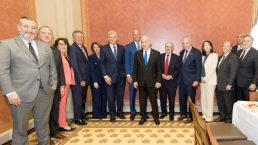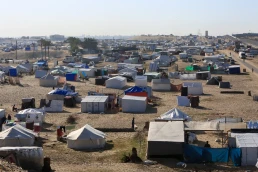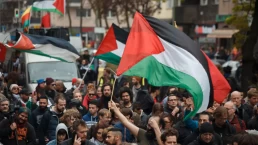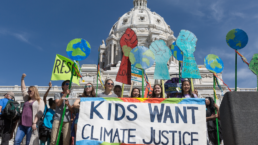Build Back Better is on the ropes. But other parts of a just transition are moving forward.
By John Feffer, Foreign Policy in Focus
In November 2018, the Green New Deal became a rallying cry for climate activists when members of the Sunrise Movement occupied House Speaker Nancy Pelosi’s office and adopted the slogan as their unifying message. A few months later, Rep. Alexandria Ocasio-Cortez (D-NY), who had joined the young activists in Pelosi’s office, brought this message to Congress when she partnered with Sen. Ed Markey (D-MA) to introduce their Green New Deal resolution. More manifesto than binding legislation, the resolution laid out a vision of an equitable clean energy transition for the United States.
In drawing from the language and history of FDR’s New Deal of the 1930s, climate activists have hoped to join together two strands of the progressive movement: environmentalism and economic justice. The United States needs to radically reduce its carbon footprint and, at the same time, create well-paying jobs, especially for those workers leaving economic sectors associated with dirty energy. As with FDR’s program, the Green New Deal relies on government direction and funding to advance this major economic transformation.
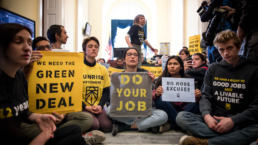
Since the original resolution, other Green New Deal bills have emerged on education, housing, and cities. U.S. cities, too, have established Green New Deal initiatives, and many civic organizations continue to champion the GND as a radical vision for a reoriented U.S. society.
Recent Posts
Why Are Democratic Lawmakers Still Meeting With Netanyahu?
July 12, 2025
Take Action Now Pictures show Democrats like Chuck Schumer standing next to Netanyahu, smiling.By Sharon Zhang, Truthout A bipartisan group of…
Stop Israel’s Dystopian “Humanitarian City” Plan—Before It’s Too Late
July 11, 2025
Take Action Now For the past 20 months, the world has watched—and largely enabled—a genocidal campaign in Gaza. Over 55,000 Palestinians have been…
The “Liberal” International Order Is Criminalizing Palestine Protests
July 11, 2025
Take Action Now As Western governments repress Palestine solidarity and enable Israel’s impunity, the “liberal international order” is no longer…
Politicians Are Betraying Gen Z On Climate
July 10, 2025
Take Action Now While Gen-Zers thrift, knit, crochet, and find other ways to reduce our footprints, Trump and the GOP are greenlighting more climate…

